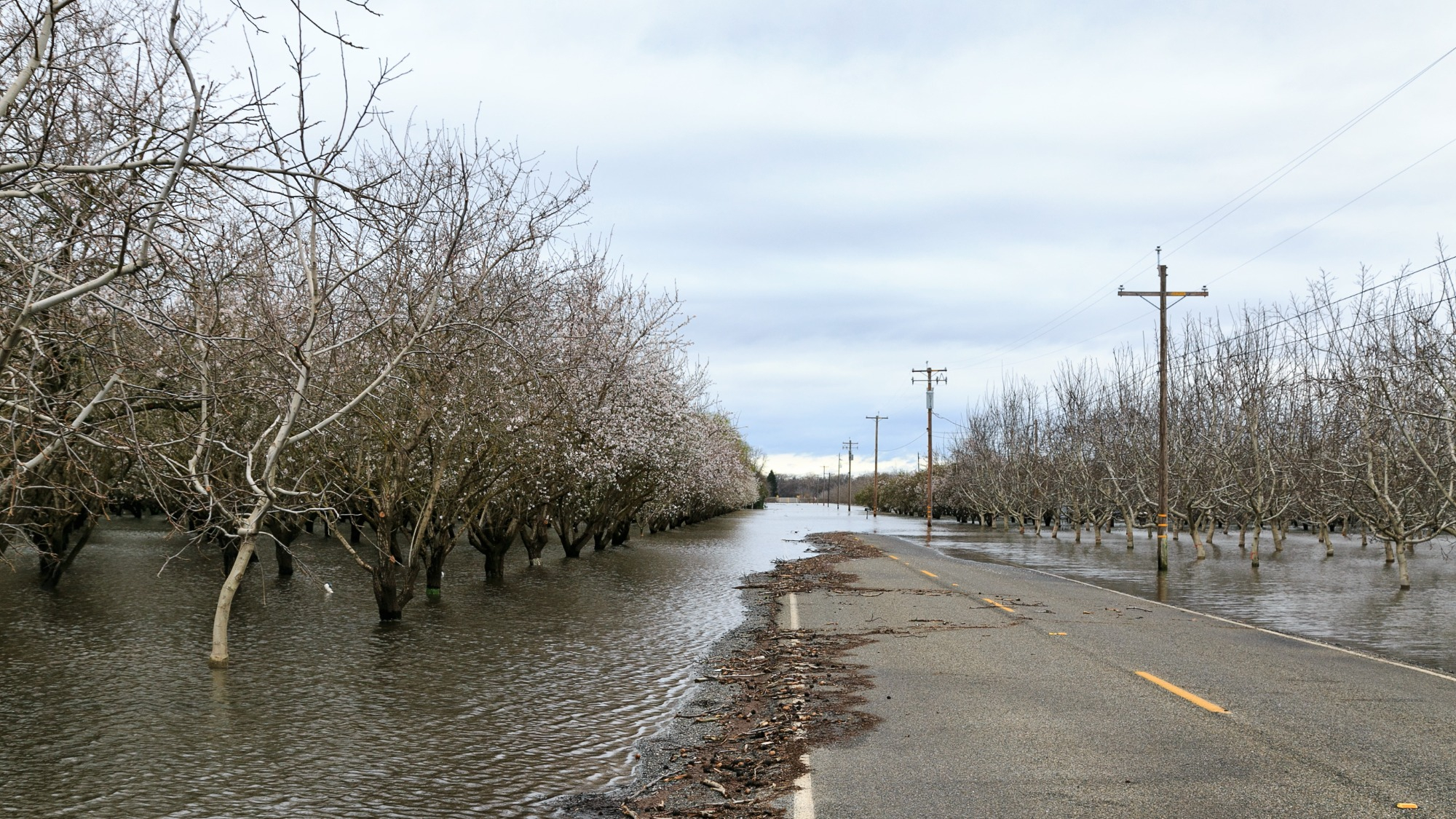

This article was originally featured on High Country News.
Just days into 2023, Californians braced for the latest in a series of atmospheric river storms that National Weather Service forecasters called “impressive,” “debilitating” and “brutal.”
“To put it simply, this will likely be one of the most impactful systems on a widespread scale that this meteorologist has seen in a long while,” an unnamed Bay Area meteorologist wrote in the agency’s ongoing forecast discussion.
Much of Northern California is still recovering from a New Year’s Eve storm that dumped widespread, historic rain: One downtown San Francisco monitor recorded 5.46 inches in 24 hours, just shy of the wettest day in 170 years of record-keeping. Water inundated Bay Area homes and businesses, and flooding on the Cosumnes River southeast of Sacramento breached at least two levees, closing Highway 99 and leaving one person dead.
Another storm was forecast for Jan. 4 and 5, and meteorologists are watching several more that appear poised to follow. Coming in such rapid succession over an already-soaked landscape, their cumulative effect “could be quite debilitating,” forecasters wrote, though meteorologists believe it will still fall short of the epic “ARkStorm,” a megaflood scenario outlined by scientists that was widely publicized in 2022.
That these storms are so clustered is unusual, threatening historic damage to one of the West’s most populous regions. But severe storms of this type—called atmospheric rivers—are becoming more likely and intense as global temperatures rise. They’re also not universally terrible: Though they can do serious damage to human communities, some ecosystems rely on regular flushes of heavy precipitation. More and more, the West’s drinking water supply does, too.
What is an atmospheric river?
An atmospheric river is a narrow band of moisture that starts in the tropics and flows toward the western coasts of North America, South America and Europe like a river in the sky. “They can carry an amount of water roughly equivalent to the average flow (in cubic feet per second) at the mouth of the Mississippi,” said Matt Solum, a response and preparedness specialist at the National Weather Service’s Western Region. When the storms reach land, they release it all, often accompanied by tree-toppling winds. The strongest ones push inland, snarling the Intermountain West with snow.
Atmospheric rivers are responsible for most of the extreme flood events in the Western U.S., but they’re also critical to its water resources. NOAA estimates that just a few such storms each year provide up to half of the West’s precipitation, filling reservoirs and bolstering snowpack in a region that is otherwise increasingly parched.
What damage do atmospheric rivers cause?
When these storms hit, they unleash floodwaters, send rockslides down steep or fire-scarred terrain, slam the coast with extreme waves, and topple trees and powerlines, endangering lives. Infrastructure designed to protect residents from flooding may be threatened, too: Scientists have long warned that the nation’s aging dams weren’t built to withstand a new era of floods. In 2017, the spillway of California’s Oroville Dam cracked under the pressure of atmospheric river rainfall, forcing the evacuation of 180,000 people downstream. Reservoirs across Northern California neared historic lows in 2022, which gives them a large buffer to absorb runoff—but that could change if this month’s rainfall reaches the higher end of projections, UCLA climatologist Daniel Swain said on a recent YouTube stream on his Weather West channel.
Could this atmospheric river end the drought?
This month’s California storms should go a long way toward easing drought in the short term, Swain said. But they won’t do much in the longer term. As global temperatures rise, drought conditions in the West are driven more by increased evaporation than by lack of precipitation.
Is climate change making atmospheric rivers worse?
Warmer air carries more moisture, so climate change is making atmospheric rivers more potent, even as other water supplies across the Western U.S. dwindle. In 2022, researchers at Scripps Institution of Oceanography found that damages from atmospheric river-caused floods could triple by the end of the century if action is not taken to reduce global emissions. Currently, such damages average about $1 billion annually in the U.S.
Do atmospheric rivers help ecosystems?
Many species, including salmon, rely on periods of heavy rainfall, like those atmospheric rivers bring. The effects of atmospheric rivers on actual rivers are mixed: Heavy flows can scour and erode creek beds, threatening whatever is living—or spawning—in them. But in some places, high flows due to atmospheric rivers have actually helped salmon get upstream – including into one California creek where they’d never been recorded before.
